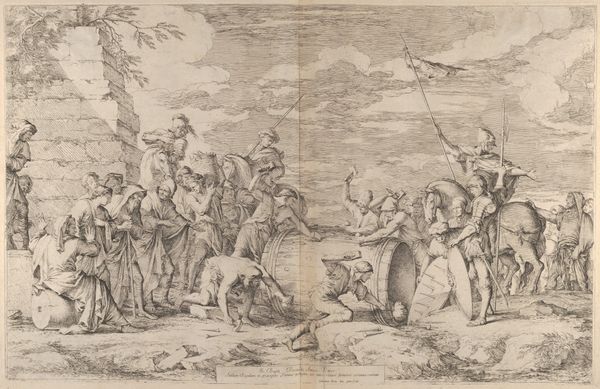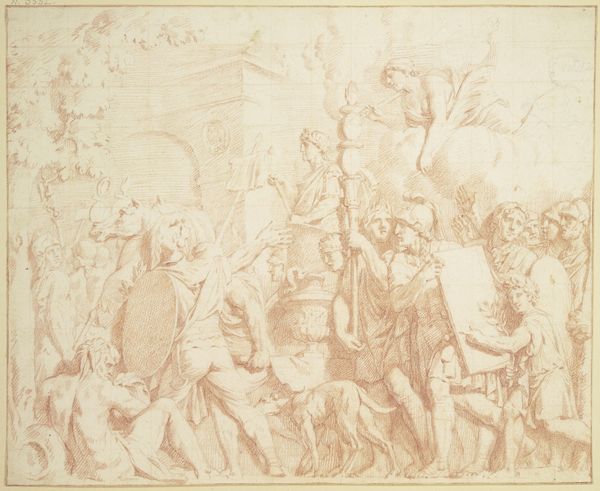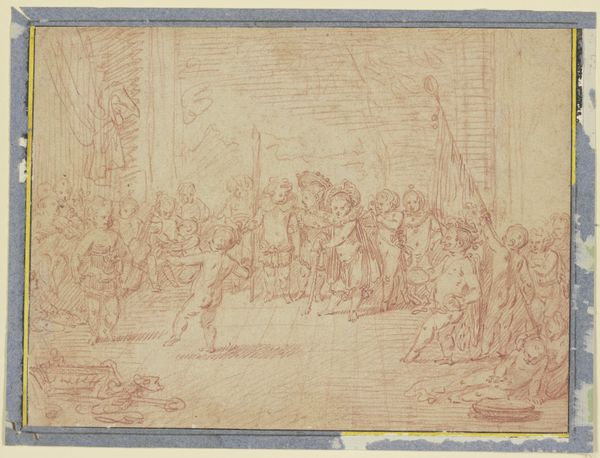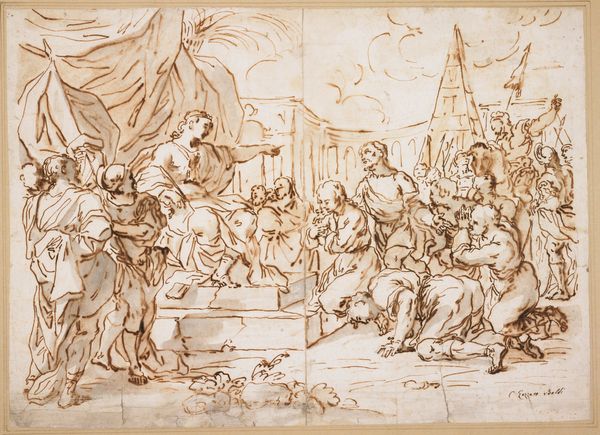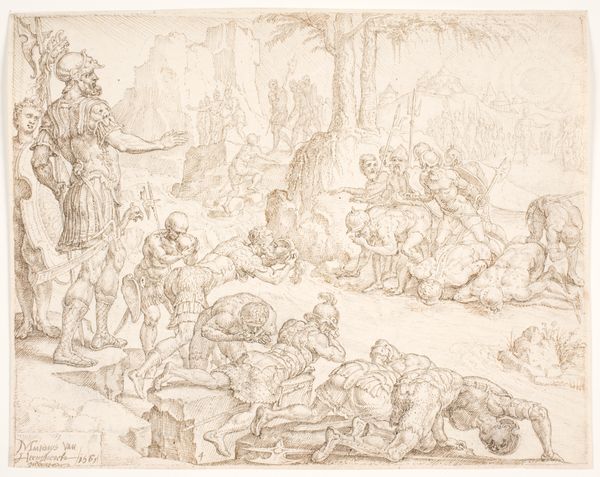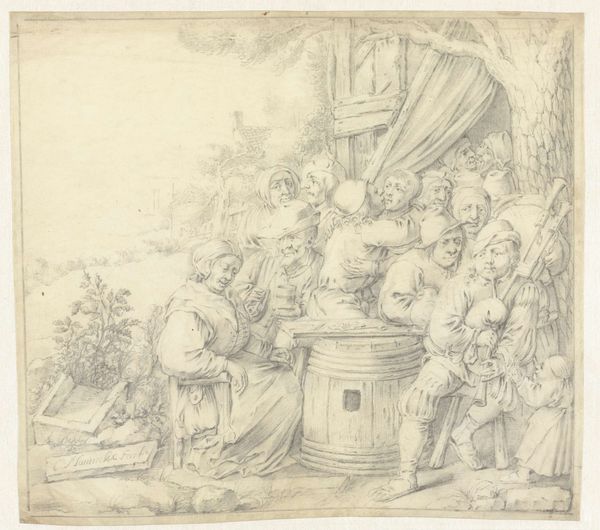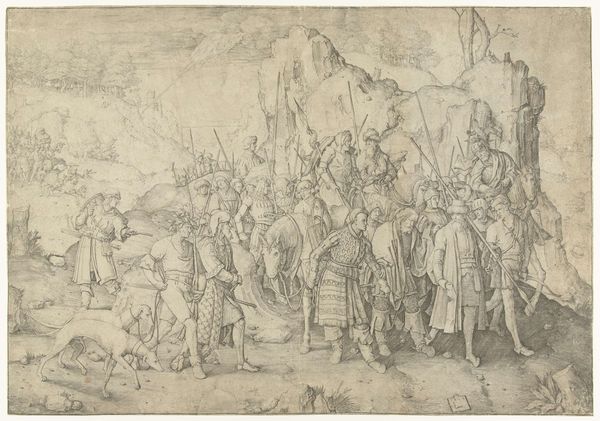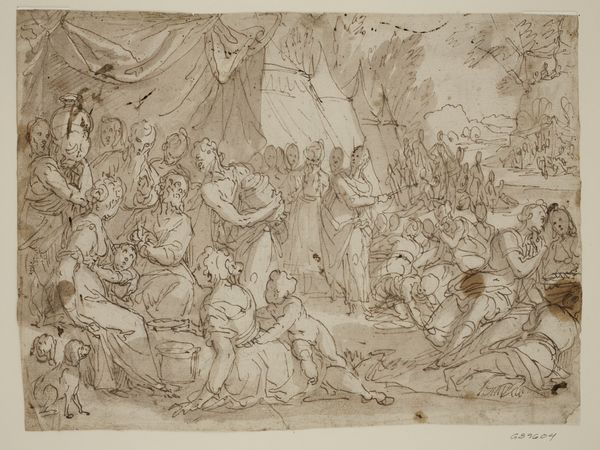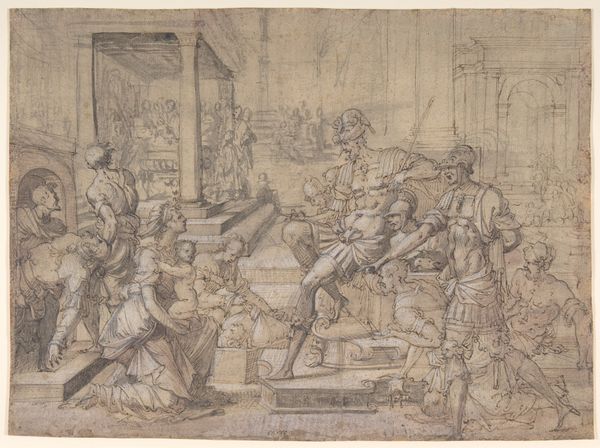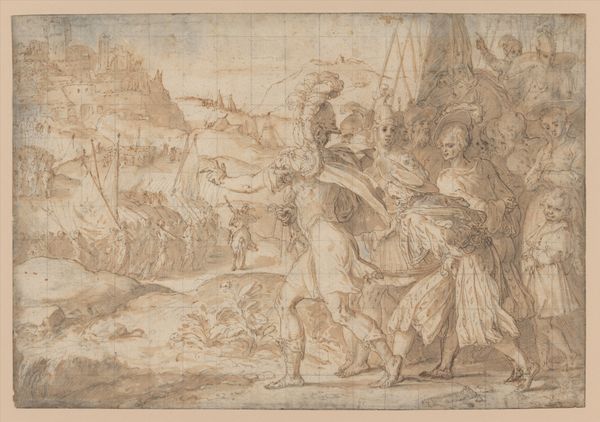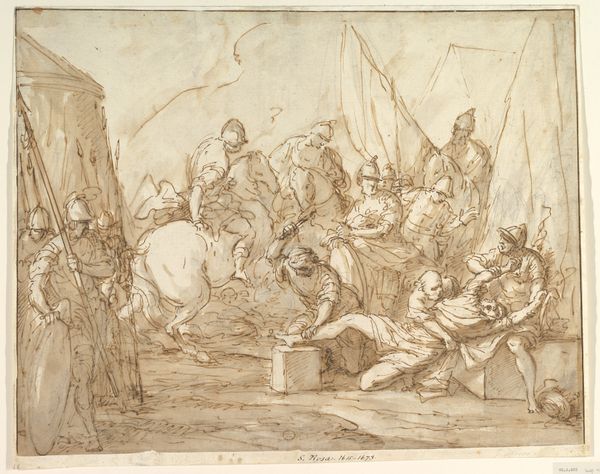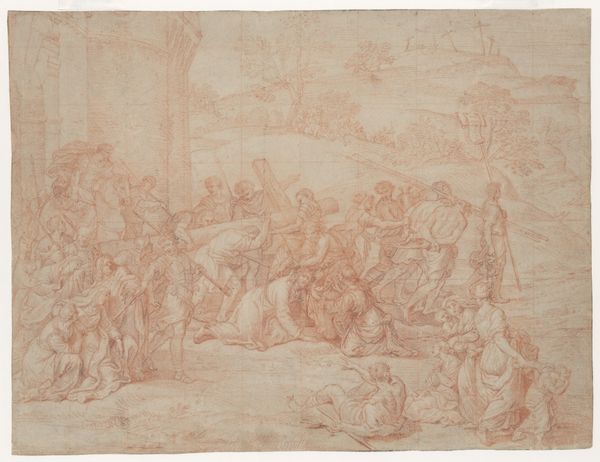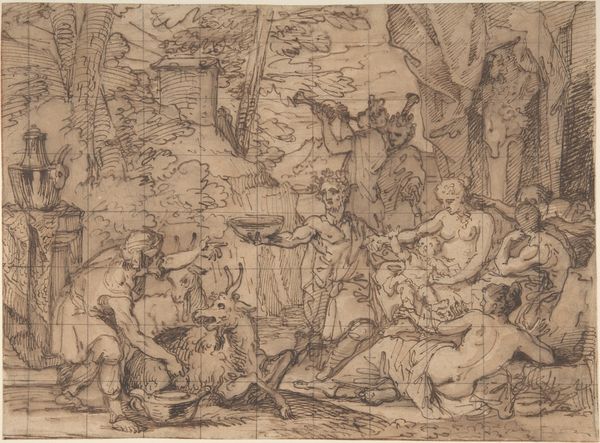
drawing, print, ink
#
portrait
#
drawing
#
narrative-art
#
baroque
# print
#
death
#
figuration
#
ink
#
horse
#
history-painting
#
sword
Dimensions: 18-1/8 x 28-7/8 in. (46 x 73.4 cm)
Copyright: Public Domain
Curator: Alright, let's have a look at Salvator Rosa's "Death of Regulus," believed to have been made sometime between 1615 and 1673. It's currently housed here at the Metropolitan Museum of Art. It is executed with ink. Editor: Immediately, this scene evokes… I don't know… impending doom. A narrative unraveling like threads on a worn tapestry, so very Baroque. You know what I mean? Lots of anxious bodies in motion, caught between grandeur and graphic brutality. It’s the kind of piece that practically shouts from across the room. Curator: Well, the material construction certainly underscores that feeling. Look closely, you can really trace how Rosa employed layered hatching, see how he built the figures, volume, and the dramatic lighting? The relatively simple application of the ink medium against the off-white tone of the page allows the artist to capture a wide range of textures. Editor: I love how it feels so immediate despite being historical subject matter, which adds layers, right? Like we’re getting a peek behind some dusty, moralizing curtain of Roman "virtue," a snapshot of its costs in real suffering, maybe some good old skepticism. It’s a narrative of power being exacted, not just abstract virtue. I find I question the notion of heroes in such an instance. Curator: I agree. Rosa would have undoubtedly conceived of the image with the printmaking process in mind. The ease with which a drawing can be translated into a disseminated printed image via an etching or engraving only increases the likelihood of broad social consumption. He even draws it in two sheets, allowing us to examine the structure of the means of production of art as it literally splits down the center of this historical tableau. Editor: That structural observation is striking. Like breaking down not just a narrative of valor but the material underpinnings propping up those very stories! It resonates because these prints could themselves reinforce myths of greatness. Okay, my mind is properly twisted, excellent! Curator: Indeed, quite a convergence of form and function here, prompting much for viewers to chew on, even after we depart. Editor: Exactly. I came seeking death and destruction and walked away with insights into the machine! What a marvel.
Comments
No comments
Be the first to comment and join the conversation on the ultimate creative platform.
